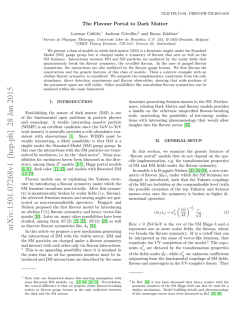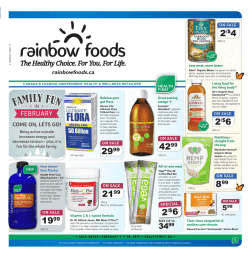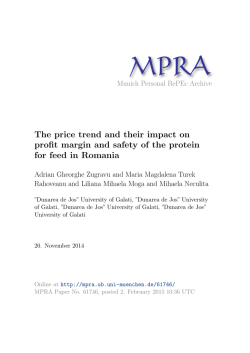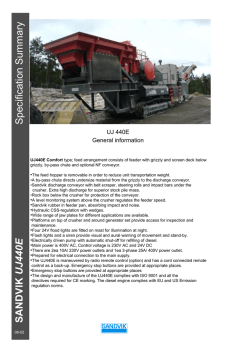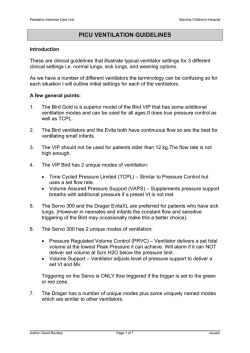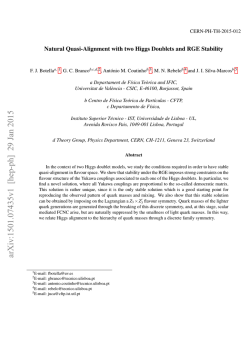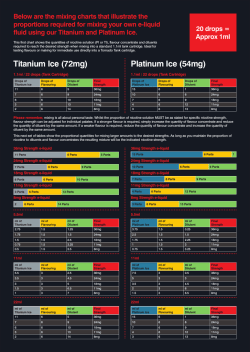
Improvement of the transition to solid feed in weaned piglets
Improvement of the transition to solid feed in weaned piglets by Luis Mesas Mora and Juan José Mallo, Norel SA, and David Solà-Oriol, SNiBA, Universitat Autónoma de Barcelona, Bellaterra, Spain. mprinting is an irreversible biological learning by which young animals identify themselves with their parents and learn from them through imitation and observation. The zoologist Konrad Lorenz, father of the terminology ‘imprinting’, described it as an early learning that happens at the moment of birth, when the animal identifies with the environment that surrounds it through its senses and records these first perceptions to learn. The duration of this learning period may vary depending on the species. I Imprinting in feeding TImprinting (precocious learning) allows a preferential effect through the tastes and flavours of the maternal diet to be created. For example, these could be transmitted through the amniotic liquid and be perceived by the foetus during the fluid intake. The flavours and tastes can also reach the foetal blood after crossing the placenta and possibly be perceived by the foetus nasal capillaries. Studies conducted with babies of mothers that consumed food with anise flavour during the last two weeks of gestation showed that the babies presented a higher preference towards anise flavour than the babies that were not exposed to the flavour during gestation. It has been proved that the exposure to flavours, derived from the maternal diet, modulate the food preferences and neophobias of young animals in several species. The effects of a prenatal exposure to a certain flavour creates a preference that can be strengthened if there is a continuity in the exposure during the lactation. Trials with rabbits and sheep proved that the prenatal exposure to a flavour turned into a higher acceptation of the same flavoured feed at weaning. Weaning Weaning is a critical moment in the life of almost all mammals. In the case of piglets, the challenge is even bigger due to how fast and prompt it is done in modern intensive swine production. The piglets have to face big challenges during this stage: the separation of the mother, a change of environment, mixing with different litters and the change of diet, among other factors. This situation produces stress in the animal and a neophobia to the feed that results in a low feed intake at weaning. Therefore, precocious learning can be especially interesting in the case of piglets, which are generally weaned much earlier than in natural conditions. The increase in the preference for a certain type of food can help motivate the piglets to consume solid food, and therefore improve their welfare, reduce early weight loss and the incidence of diarrhoea. Marije Oostindger (2011) studied the Table 1. Weight of the piglets after weaning; fed with prestarter and starter feeds. Weight in kg at effects of pre and post natal exposure to a flavour in the piglets’ behaviour. The piglets were exposed to an anise flavour through the sow diet during the last stage of gestation and/or during lactation or none of them. In several of the performed trials, the piglets that were prenatally exposed to the flavour behaved differently compared to the ones that were not exposed. This fact shows the capacity of the piglets to recognise the flavour after the birth. The differences between the groups were more notorious in the trials conducted in relatively high levels of stress. These results suggest that the presence of the familiar flavour can play a role in the stress that the animals suffer. Recently, Figueroa et al. (2013) observed that the piglets from mothers that had received a diet supplemented with sweet anise during the gestation had a preference for anise during lactation and even after being weaned, demonstrating how the preferences that are acquired before birth through prenatal exposure are long lasting. Trial work The objective of the current work was to determine the effects of the implementation of an essential oils flavour during the last third of the gestation and lactation, and later on during the weaning period. The study was conducted to confirm if the flavour could leave a familiar signal that acted as a learning (imprinting) in the weaning and facilContinued on page 16 Table 2. Daily average feed intake (DAFI) after weaning; fed with pre-starter and starter feeds. Piglet Initial treatment weight (kg) 7 days 14 days 35 days Piglet treatment T-1 7.415 8.066b 9.892b 18.933b T-2 7.423 8.319ab 10.219ab T-3 7.407 8.393a SEM 27.6 P-value 0.93 DAFI 0-7 days (g) DAFI 0-14 days (g) DAFI 0-35 days (g) T-1 151.7b 238.0b 485.5b 19.774ab T-2 174.8ab 259.5ab 536.7a 10.453a 20.036a T-3 196.3a 297.0 563.7a 75.5 108.1 348.5 SEM 7.98 8.72 12.24 0.004 0.001 <0.001 <0.001 0.001 International Pig Topics — Volume 29 Number 5 0.048 P-value 15 Continued from page 15 itate the transition from the liquid (lactation) to the solid food, and if this improved the feed intake and weight of the piglets. The experiment was done in the farm of the Animal Nutrition and welfare Service (SNiBA) in Manlleu, Barcelona. The farm is a S1 + S2 with 350 sows (Landrace x Large White) that follows a three-week batch management system. For the study 80 sows were selected (two rows, 40 sows each) and divided in two groups during the last third of the gestation and during lactation. One group was given a control diet (C) and the other group the same diet supplemented with Fluidarom 1003 (F). During lactation, the control litters received a standard lactation feed, while the Fluidarom 1003 sows received that same feed supplemented with the same flavour used in gestation. Three groups were made at weaning; they received a pre-starter medicated diet (0-14 days) with zinc oxide (2500ppm), colistin (120ppm) and amoxycilin (300ppm), at 14 days feeds were changed to starter diets (14-35 days). The animals were allocated at random to one of these groups: l T-1. Piglets from the Control sows then fed with the Control post-weaning diets diets (CC). l T-2. Piglets from the Control sows then fed with a Fluidarom 1003 supplemented post-weaning diets (CF). l T-3. Piglets from the sows supplemented with Fluidarom 1003 were then also fed with a Fluidarom 1003 supplemented postweaning diets (FF). Results The results obtained during the gestation stage showed no differences between the two treatments when compared, neither in the weight or size of the litters or the birth weight of the piglets. During the lactation non-significant differences were observed in the average feed intake of the sows (C:5.43kg ; F:5.72kg), or in the weight of the piglets, were the piglets from sows with Fluidarom 1003 treatment achieved a higher weight (+4.79%). The post-weaning results showed significant differences in the first week ADFI in the T-3 treatment compared with the control treatment T-1, while the T-2 treatment also presented a higher feed consumption but not significant (T-2 = + 15.23% and T-3 = + 29.40%). The results of the growth in the first week had the same trend as the feed intake (T2 = +39.08% and T3 = +52.98%). With regard to the weight of the piglets, T3 presented a positive difference of + compared to the control T-1 treatment. At the end of the pre-starter and starter period, the results showed positive significant differences in the ADFI, ADG and weight of the diets implemented with Fluidarom 1003 compared to the control (Tables 1, 2 and 3). Conclusions The inclusion of Fluidarom in the diets of sows during gestation and lactation improves the weight growth and the feed intake of the weaned piglets during the prestarter and starter phase. The inclusion of Fluidarom in the weaning diets (pre-starter and starter) contributes also positively to the increase of the feed intake and weight gain of the piglets. n References are available from the author on request Table 3. Average daily gain (ADG) after weaning; fed with pre-starter and starter feeds. Piglet treatment 16 ADG (g) 0-7 days 0-14 days 0-35 days T-1 92.1b 174.4b 365.7 T-2 128.1a 199.8ab 391.2 T-3 140.9a 217.5a 396.6 SEM 10.52 8.04 11.44 P-value 0.003 0.002 0.103 International Pig Topics — Volume 29 Number 5
© Copyright 2025

